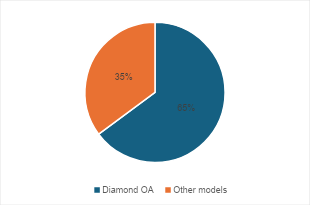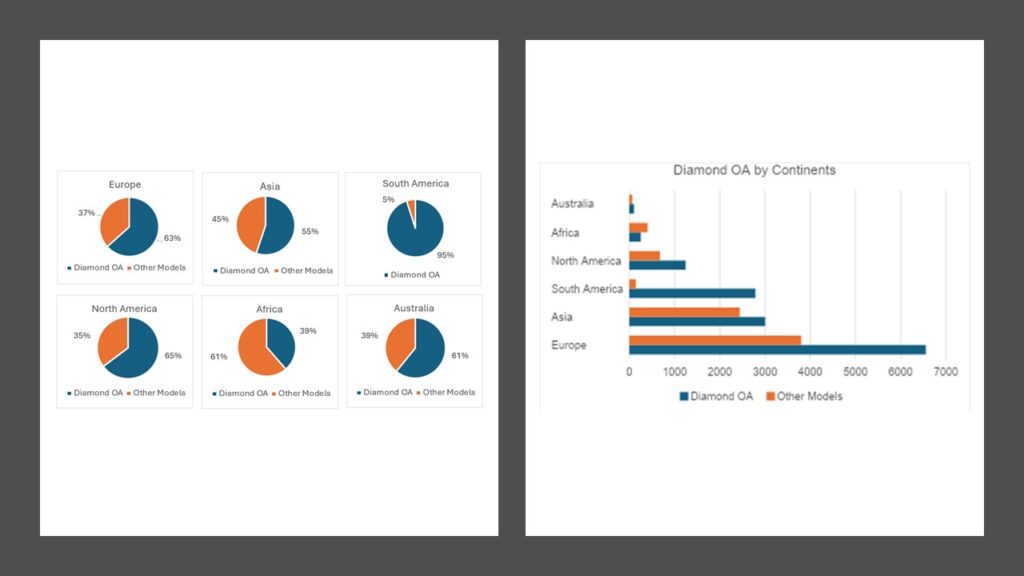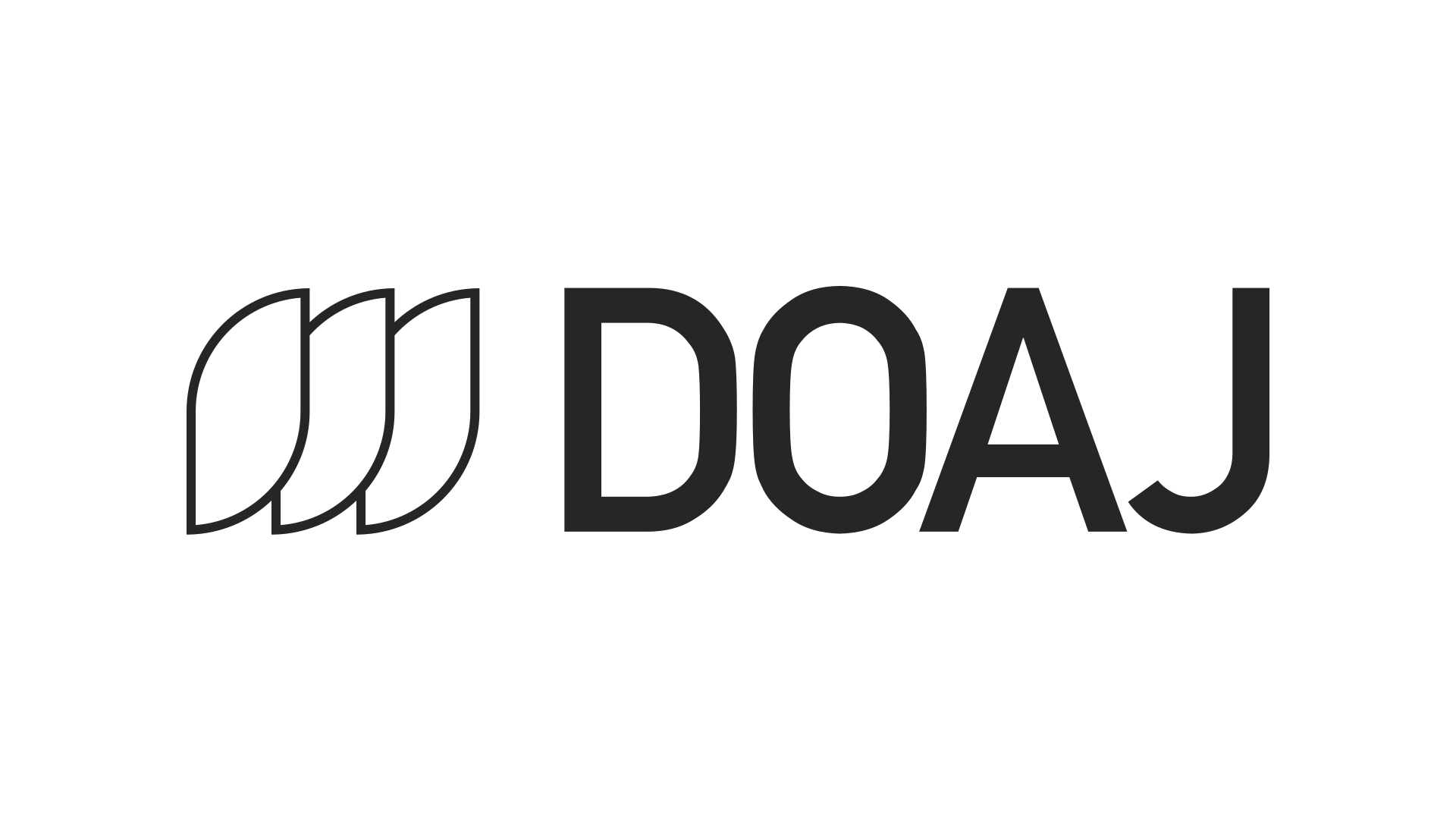This blog post explores data from DOAJ to map the presence of Diamond OA journals across the MENA region. Mahmoud Khalifa, DOAJ Managing Editor and Ambassador for MENA, discusses how widespread the model is, which countries are leading the way and discusses how these trends identify the future of equitable publishing in the region.
The rise of the diamond open access movement
In recent years, the open access (OA) movement has transformed how scholarly knowledge is published and shared. But within the broader OA landscape, Diamond Open Access stands out for its unique commitment to equity: journals that are completely free to read e free to publish in. No subscription fees, no article processing charges (APCs). Just open, unfettered access to knowledge — and for many regions of the world, especially those facing financial or infrastructural constraints, this model isn’t just idealistic; it’s essential.
The Middle East and North Africa (MENA) region presents a powerful case for why Diamond OA matters. With the low economic conditions and persistent funding gaps, the region is well-positioned to benefit from models of publishing that reduce financial barriers and promote local scholarship.
Diamond open access globally
Based on the analysis of DOAJ journal metadata, Diamond OA journals represent the majority, accounting for 65% compared to 35% for other OA models. This trend highlights the growing momentum and significance of this movement in scholarly publishing.

Diamond open access by continents
The data analysis shows that Diamond OA journals hold the majority in all continents except Africa, where only 39% of journals follow the Diamond model compared to 61% using other publishing models. In terms of the total number of Diamond OA journals, Europe leads with 6,555, followed by Asia with 3,002. However, when considering the percentage of Diamond journals within each continent, South America ranks highest, with an impressive 95% of its journals operating under the Diamond model, followed by North America (65%) and Europe (63%). Table 1 below shows the total number of Diamond OA journals indexed as at April 2025 and summarized by continent.
| Diamond OA | Other Models | Total | |||
| No. | % | No. | % | ||
| Europe | 6555 | 63% | 3799 | 37% | 10354 |
| Asia | 3002 | 55% | 2440 | 45% | 5442 |
| South America | 2785 | 95% | 144 | 5% | 2929 |
| North America | 1245 | 65% | 678 | 35% | 1923 |
| Africa | 252 | 39% | 400 | 61% | 652 |
| Australia | 101 | 61% | 65 | 39% | 166 |
Table 1. Diamond OA journals indexed as at April 2025 and summarized by continent

Mapping the MENA landscape in DOAJ
According to the DOAJ, as of April 2025, 611 journals from the MENA region are indexed. In contrast, the rest of the world accounts for 20,855 journals. This means MENA journals make up just under 2.8% of all DOAJ-indexed journals. This relatively small share suggests that despite growing efforts, there remains considerable room for enhancing the visibility and integration of MENA research outputs within the global OA ecosystem.
Egypt leads the region with 291 journals, followed by Iraq (156) and Morocco (34). Together, Egypt and Iraq account for 73% of the MENA’s DOAJ-indexed journals (see Table 2 below). This distribution suggests a few dominant players in the regional scholarly publishing landscape, while several countries remain underrepresented.
| Country | OA Journals | Diamond Journals |
| Egypt | 291 | 65 |
| Iraq | 156 | 32 |
| Morocco | 34 | 33 |
| Algeria | 27 | 27 |
| Saudi Arabia | 23 | 19 |
| Qatar | 16 | 15 |
| Yemen | 13 | 4 |
| Syria | 11 | 1 |
| UAE | 10 | 8 |
| Oman | 8 | 8 |
| Tunisia | 6 | 6 |
| Libya | 5 | 3 |
| Jordan | 4 | 2 |
| Bahrain | 2 | 1 |
| Lebanon | 2 | 1 |
| Palestine | 2 | 2 |
| Kuwait | 1 | 1 |
Diamond OA penetration in the MENA region
Out of the 611 OA journals in MENA, 228 follow the Diamond OA model. This means approximately 37.3% of MENA journals in DOAJ operate without charging authors or readers.
Notably, some countries such as Algeria, Morocco, and Oman exhibit 100% or near-100% Diamond OA adoption, while others like Syria and Yemen are still developing in this regard. This may reflect different national policies, institutional capacities, and levels of government or donor support.
Observations and Reflections
The large number of journals in Egypt and Iraq—especially compared to neighboring countries—indicates a more developed academic infrastructure or stronger policies supporting open access (OA) publishing.
Diamond OA journals, which remove APCs, provide a more equitable publishing path for researchers in lower-income or conflict-affected areas. Given the many such contexts across the MENA region, strengthening the Diamond OA model could offer significant benefits.
Overall, more efforts are needed to increase the number of MENA journals indexed in the DOAJ. Although DOAJ is working to expand its coverage in the region through two local ambassadors, journal editors and publishers must also prioritize getting their journals indexed. Being listed in DOAJ remains an important marker of quality and visibility in the OA landscape. Expanding the presence of MENA journals in DOAJ—and supporting those already listed—will help elevate the region’s scholarly profile worldwide.
Mahmoud Khalifa is a PhD candidate at Humboldt University of Berlin and is writing his dissertation about national information policies. Previously working in the Library of Congress Cairo Office, Mahmoud was an associate at the IFLA International Leaders Programme, 2016-2018, and an accredited trainer for the IFLA BSLA programme (Building Strong Library Association), as well as an OCLC Fellow at Jay Jordan IFLA/OCLC Early Career Development Fellowship Program.


Thank you, dear Mahmoud Khalifa, for preparing and sharing this valuable report. One observation, however, is that Iran—recognized as one of the leading countries in the MENA region in open access publishing—has not been included in the analysis. If possible, it would be greatly appreciated if the report could be updated to incorporate information about Iran as well.